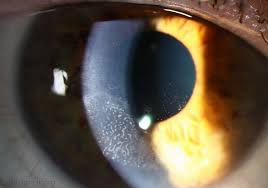Table of Contents
ToggleLASIK, or Laser-Assisted In Situ Keratomileusis, is a widely favored refractive surgery aimed at correcting vision problems like myopia, hyperopia, and astigmatism.
Despite its widespread use, many people are unaware of the intricate details of the procedure, particularly what part of the cornea is involved.
In this blog, we will explore the specifics of the LASIK procedure, focusing on the part of the cornea that is cut, and why this is crucial for achieving clearer vision.
The Cornea and Its Function
Before we dive into the specifics of LASIK, it’s essential to understand the structure and function of the cornea.
The cornea is the clear, dome-shaped surface that protects the front of the eye.
It functions as the eye’s primary focusing element, bending and refracting light onto the retina to create clear images.
The cornea consists of five distinct layers:
- Epithelium: The outermost layer, which acts as a barrier to protect the eye from dust, germs, and other harmful particles.
- Bowman’s Layer: A tough, protective layer that lies just beneath the epithelium.
- Stroma: This is the cornea’s thickest layer, consisting of collagen fibers and water, which grant the cornea its strength and elasticity.
- Descemet’s Membrane: A thin but strong sheet of tissue that serves as the foundation for the endothelium.
- Endothelium: The innermost layer responsible for maintaining the cornea’s transparency by regulating fluid and nutrient content.
What Part of the Cornea is Cut in LASIK Surgery?
In LASIK surgery, the focus is primarily on the stroma, the cornea’s middle layer. The procedure involves creating a thin flap in the cornea to access and reshape the underlying stroma. Following is a detailed, guide with step-by-step parts on how this is actually accomplished:
1. Creating the Corneal Flap
The first step in LASIK surgery is to create a thin, hinged flap on the surface of the cornea. This procedure is performed either by using a microkeratome, which is a surgical instrument with a blade, or by using a femtosecond laser. The flap typically includes the epithelium, Bowman’s layer, and a small portion of the stroma.
2. Lifting the Flap
After creating the flap, it is carefully lifted and folded back to reveal the underlying stroma. This allows the surgeon to access the corneal tissue that needs to be reshaped.
3. Reshaping the Stroma
With the stroma exposed, an excimer laser is used to remove microscopic amounts of corneal tissue. The laser is programmed based on the patient’s specific refractive error, whether it be nearsightedness, farsightedness, or astigmatism. By precisely reshaping the cornea, light can be accurately focused onto the retina.
4. Repositioning the Flap
After reshaping the stroma, the corneal flap is carefully repositioned back onto the eye. The flap naturally adheres to the underlying corneal tissue without the need for stitches, thanks to the cornea’s unique properties.
5. Recovery and Healing
The repositioned flap begins to heal almost immediately, typically reattaching within a few minutes. Over the following days and weeks, the epithelium regenerates, further securing the flap in place. Most patients experience significant improvement in their vision within 24 hours of the procedure.
Why the Stroma?
You might wonder why LASIK surgery targets the stroma rather than other layers of the cornea. The answer lies in the stroma’s unique characteristics and its crucial role in corneal refraction. Here are some reasons why the stroma is the ideal candidate for LASIK surgery:
Structural Integrity
The stroma makes up approximately 90% of the cornea’s thickness, providing structural integrity and support. By targeting the stroma, surgeons can make significant changes to the cornea’s shape without compromising its stability.
Collagen Fiber Arrangement
The stroma is composed of tightly packed collagen fibers arranged in a specific pattern.This setup permits precise reshaping with the excimer laser, allowing surgeons to achieve highly accurate and predictable outcomes.
Minimal Impact on Other Layers
By focusing on the stroma, LASIK surgery minimizes the impact on the cornea’s outer and inner layers. The epithelium and Bowman’s layer remain relatively intact, reducing the risk of complications and promoting faster healing.
Longevity of Results
Targeting the stroma ensures that the changes made to the cornea are long-lasting. Unlike the epithelium, which regenerates regularly, the stroma does not undergo significant changes over time. This means the improvements achieved through LASIK are more permanent.
The Benefits of LASIK Surgery
Now that we understand the critical role of the stroma in LASIK surgery, let’s explore the benefits of this popular procedure:
Improved Vision
The main advantage of LASIK surgery is the substantial enhancement of vision. Most patients attain 20/20 vision or better, significantly reducing or even eliminating the need for glasses or contact lenses.
Quick Recovery
LASIK surgery offers a relatively quick recovery time. Many patients experience improved vision within 24 hours and can resume normal activities within a few days.
Long-Lasting Results
By targeting the stroma, LASIK surgery achieves long-lasting results. While some patients may require minor adjustments or enhancements over time, the majority enjoy stable vision for many years.
Minimal Discomfort
LASIK surgery is known for its minimal discomfort during and after the procedure. Most patients report only mild discomfort or a sensation of dryness, which typically resolves within a few days.
High Success Rate
LASIK surgery boasts a high success rate, with the majority of patients achieving their desired vision correction. Advances in technology and techniques continue to improve outcomes, making LASIK a safe and reliable option for many individuals.
Who is a Candidate for LASIK Surgery?
While LASIK surgery offers numerous benefits, it may not be suitable for everyone. Typically an ideal candidate for LASIK surgery has to meet the following criteria:
Age
Candidates should be at least 18 years old (21 in some cases) to ensure that their vision has stabilized.
Stable Prescription
Candidates should have a stable prescription for at least one year before undergoing LASIK surgery. Significant changes in vision can affect the procedure’s outcomes.
Healthy Eyes
Candidates should have healthy eyes free from conditions such as glaucoma, cataracts, or severe dry eye syndrome.
Realistic Expectations
Candidates should realise that they need to have realistic expectations regarding the outcomes of LASIK surgery. While the procedure can significantly improve vision, it may not achieve perfect vision for everyone.
No Pregnancy or Nursing
Pregnant or nursing individuals should wait until after childbirth and nursing to undergo LASIK surgery, as hormonal changes can affect vision.
Parting Thoughts
LASIK surgery is a remarkable procedure that has transformed the lives of millions by providing clear and improved vision. By targeting the stroma of the cornea, this surgery achieves precise and long-lasting results with minimal discomfort and quick recovery times.
If you’re considering LASIK surgery, it’s essential to consult with an experienced ophthalmologist who can assess your candidacy and guide you through the process.
Remember, understanding the procedure and its impact on the cornea is a crucial step in making an informed decision about your vision correction.













